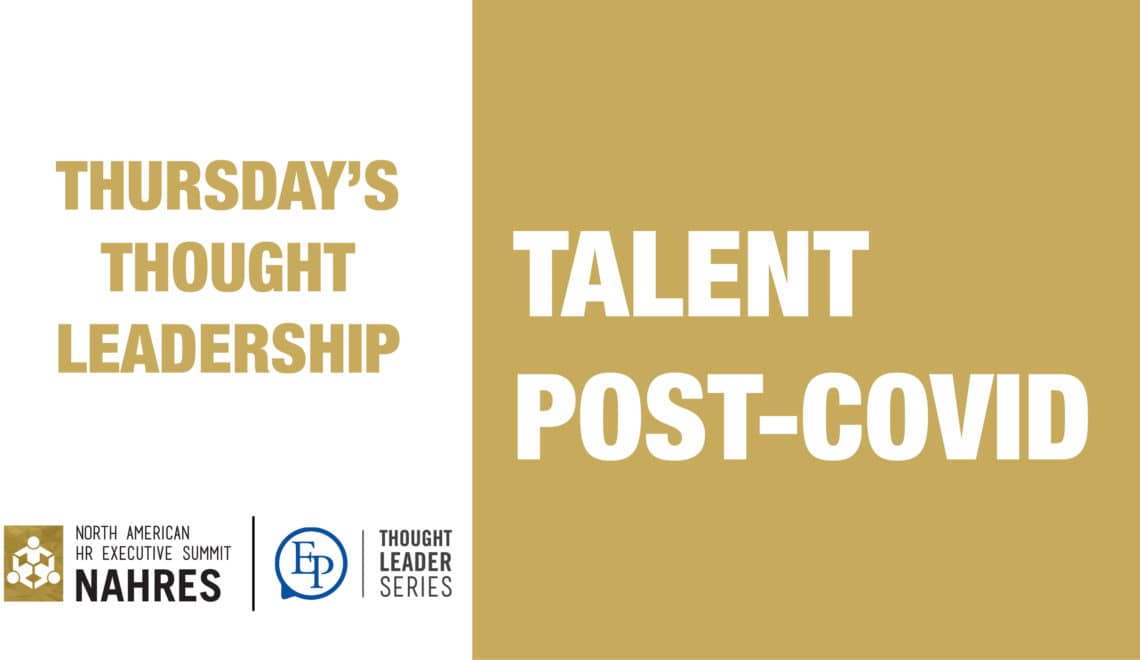
As people of working age around the globe are vaccinated and prepare to return to something like business as usual, the time has come to ask, ‘What will attracting and retaining the talent your organization needs to grow and succeed look like in the post-COVID world?’
It is a bigger question than you might think: Baby Boomers are retiring at an accelerating rate; Generation X is not far behind; the eldest Millennials are approaching their 40s, and the workers behind them have seen their education and career paths interrupted by both a global recession and a global pandemic on a scale not seen in a century. Many people have spent the last year working from home and taking stock of the work-life balance and personal and professional goals they want to look forward to after the world returns to normal, or perhaps more likely a new normal. So to bring things back to the original question, what should businesses looking to attract and retain the right people be doing now that may not have been a priority or even on the radar two or three years ago?
Here are a few things to consider about your business:
- Top Talent is going to view the end of the pandemic as an opportunity to start a new chapter in their working lives. Does your existing team have the freedom to move internally within your organization to grow themselves professionally? How attractive is your company right now to outside talent who are interested in taking the next step towards greener pastures?
- Today’s graduates are coming into the workforce with a modern education that included a lot of virtual learning because of COVID-19. Hands on experience and on the job training will be invaluable to them, and also make them into productive members of the team. How strong are your onboarding processes? Could job shadowing and mentoring be an opportunity not just to improve the productivity of new employees, but also to bring new bonds and experiences to existing employees who may need fresh purpose upon their return to the office?
- Employee experience and employee engagement have always been key driving forces behind successful talent retention. Now may be the time to rethink and refresh how you understand your workforce. How connected are HR and middle management to frontline workers? Does senior leadership have two-way communication with the rank and file? There has never been a worse time to be disconnected from the day-to-day operations of your people than as they return to ‘normal’ work after more than year of what many people will always think of as a strange chapter in their lives. The more you know, the better decisions you can make.
- Not everyone needs to be a full-time employee for an organization to succeed. A diversified pool of talent that includes part-time, contract, and outsourced workers gives your company flexibility, broadens the amount of available talent, and gives Top Talent the ability to scale up or down their involvement without leaving the team. It is probably also worth thinking seriously about how many people actually need to be in the office every day, or even some days. The future of work may well include a percentage of the workforce who will go looking for the employers who are now flexible about working remotely.
- This will be a strange time for lots of companies, and many people will be talking about this issue in the months and years to come. How are you staying connected and informed about what other organizations are doing to address this issue? Who do you talk to at work about these issues? What do you read? Are there businesses you admire or service and solution providers you can engage with to help you adjust your recruiting and retention efforts? If the answers to those questions did not come easily, it might be time to give them some further thought.
—
Geoff Micks
Head of Content & Research
Executive Platforms
Geoff joined the industry events business as a conference producer in 2010 after four years working in print media. He has researched, planned, organized, run, and contributed to more than a hundred events across North America and Europe for senior leaders, with special emphasis on the energy, mining, manufacturing, maintenance, supply chain, human resources, pharmaceutical, food and beverage, finance, and sustainability sectors. As part of his role as Head of Content & Research, Geoff hosts Executive Platforms’ bluEPrint Podcast series as well as a blog focusing on issues relevant to Executive Platforms’ network of business leaders.
Geoff is the author of five works of historical fiction: Inca, Zulu, Beginning, Middle, and End. The New York Times and National Public Radio have interviewed him about his writing, and he wrote and narrated an animated short for Vice Media that appeared on HBO. He has a BA Honours with High Distinction from the University of Toronto specializing Journalism with a Double Minor in History and Classical Studies, as well as Diploma in Journalism from Centennial College.













